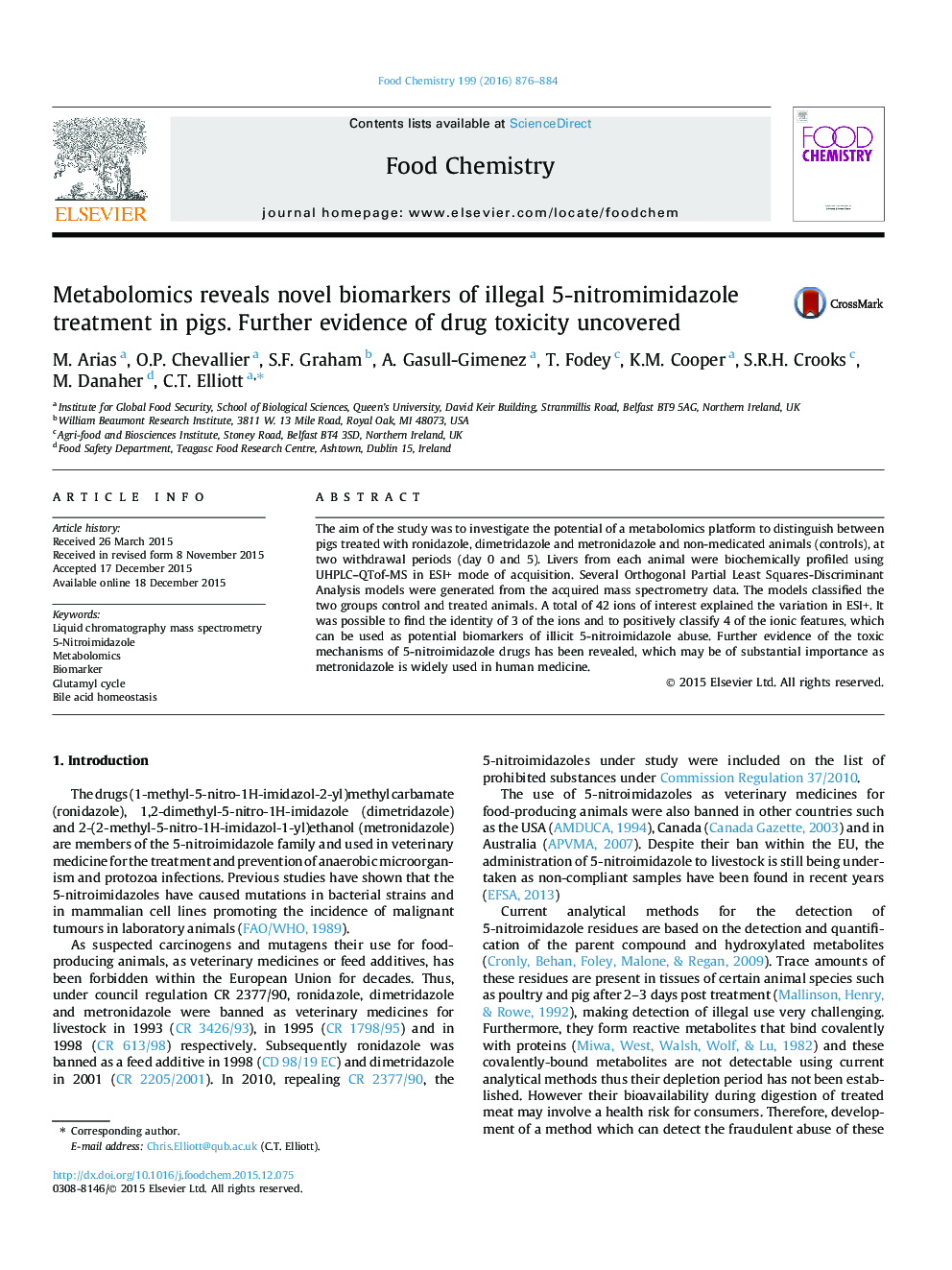| Article ID | Journal | Published Year | Pages | File Type |
|---|---|---|---|---|
| 7590209 | Food Chemistry | 2016 | 9 Pages |
Abstract
The aim of the study was to investigate the potential of a metabolomics platform to distinguish between pigs treated with ronidazole, dimetridazole and metronidazole and non-medicated animals (controls), at two withdrawal periods (day 0 and 5). Livers from each animal were biochemically profiled using UHPLC-QTof-MS in ESI+ mode of acquisition. Several Orthogonal Partial Least Squares-Discriminant Analysis models were generated from the acquired mass spectrometry data. The models classified the two groups control and treated animals. A total of 42 ions of interest explained the variation in ESI+. It was possible to find the identity of 3 of the ions and to positively classify 4 of the ionic features, which can be used as potential biomarkers of illicit 5-nitroimidazole abuse. Further evidence of the toxic mechanisms of 5-nitroimidazole drugs has been revealed, which may be of substantial importance as metronidazole is widely used in human medicine.
Related Topics
Physical Sciences and Engineering
Chemistry
Analytical Chemistry
Authors
M. Arias, O.P. Chevallier, S.F. Graham, A. Gasull-Gimenez, T. Fodey, K.M. Cooper, S.R.H. Crooks, M. Danaher, C.T. Elliott,
